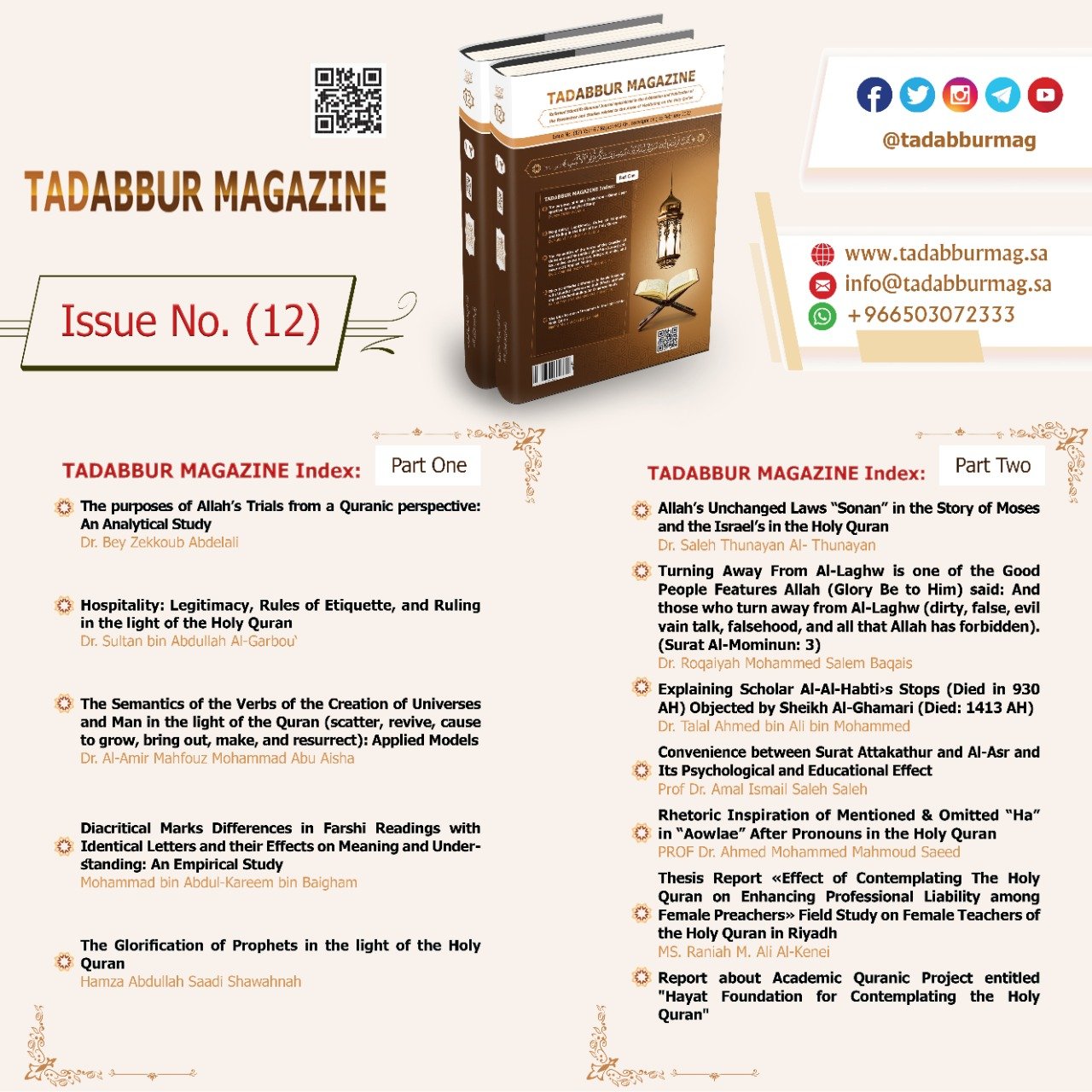The Glorification of Prophets in the light of the Holy Quran
Main Article Content
Abstract
This paper is entitled «The Glorification of Prophets in the light of the Holy Quran.» The purpose of is to shed light on the distinguishing features of the glorification (Tasbeeh) of Prophets, peace be upon them, as indicated in the verses of the Holy Quran. To achieve this objective the researcher adopted the inductive and deductive approaches to present the Quranic verses that deal with the glorification of prophets.، He drew the most important educational aspects from their approach to the performance of this act of worship. The findings of this research reached are as follows: glorification has a high status in the Holy Quran; the Prophets are masters at praising and glorifying Allah with through all their doings verbal or non-verbal; their glorification of Allah is performed at all times; one should model himself on the Prophets by praising and glorifying Allah as much as possible. The study recommends that the original concept of praise (dhikr) in general and glorification in particular should be referred to by combining verbal expression, innermost beliefs and practice.
Downloads
Article Details
Conference Proceedings Volume
Section

This work is licensed under a Creative Commons Attribution-NonCommercial 4.0 International License.
Indicating to the intellectual property, copyrights, and open access right:
According to the Budapest Initiative 2002; tadabbur Journal, which is issued by Khibrat Taibah For Research and Studies in Medina, provides free open access to its publications, and applies the Creative Commons license:
Attribution- Non-Commercial 4.0 International (CC BY-NC 4.0) for the works it publishes from peer-reviewed scientific research and reports, which are freely available on the Internet, and which allows any user to read, download, copy, and distribute (Convert), print, search, or create links to the full texts of the journal’s research and publications, and analyze them in an automatic manner for discovering them, sending them as software data, or using them for any other legal purpose, without financial, legal, or other technical barriers beyond those related to Internet access.
It also highlight that the only barrier to reproduction and distribution, and the only role of copyright in this field, is the necessity of granting the authors of the journal’s research and reports and the publisher the journal; Control over their works, and the right to official recognition and reference citations.





